UNMC's Corey Hopkins, PhD, is a pharmacy professor and, more informally, a medicinal chemist who designs and creates compounds to solve problems. And he's passing on this skill to his students and mentees.
As his students prove their own skills through significant new creations, Dr. Hopkins is mapping the achievements onto his arm – with tattoos of the compounds' makeup.
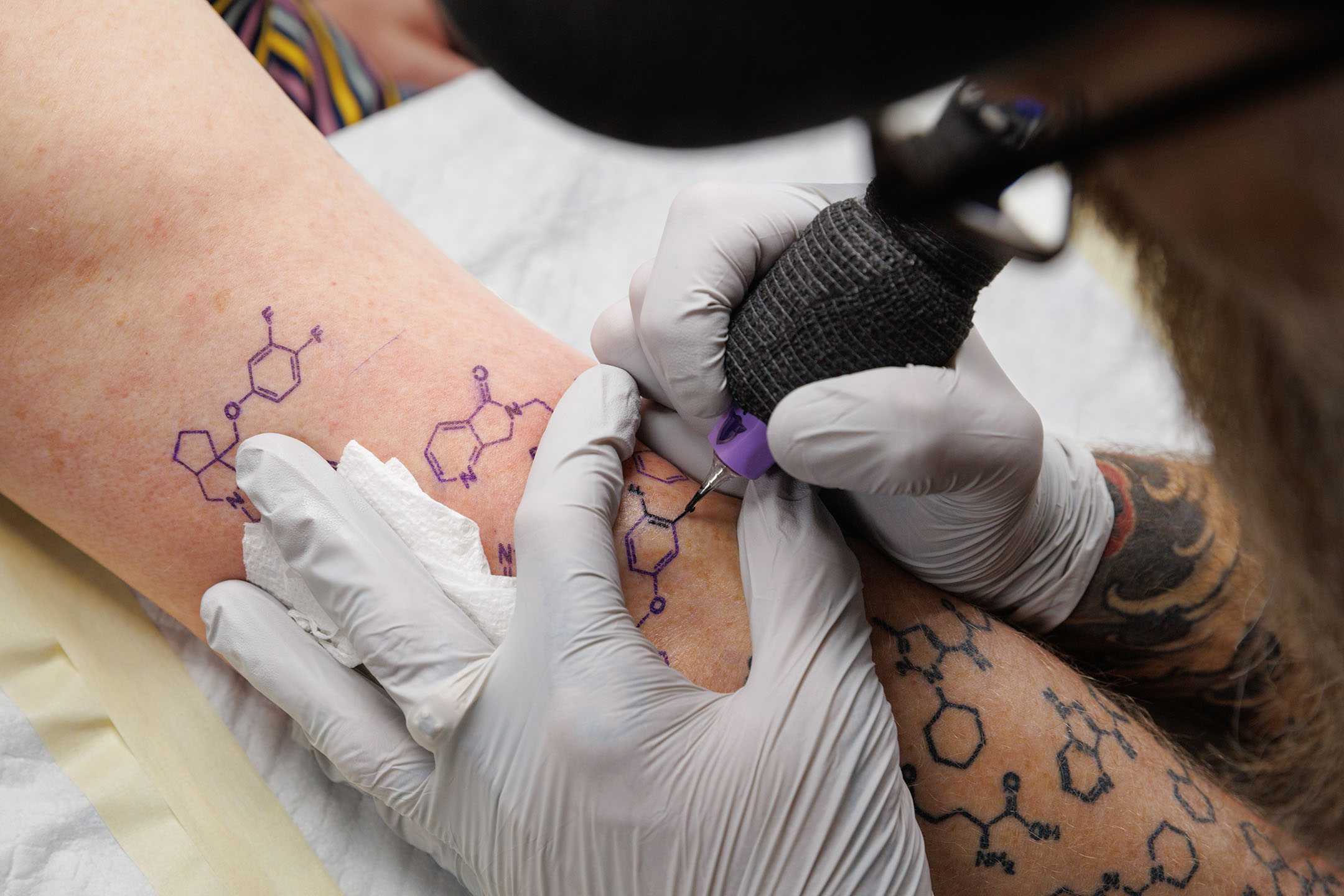
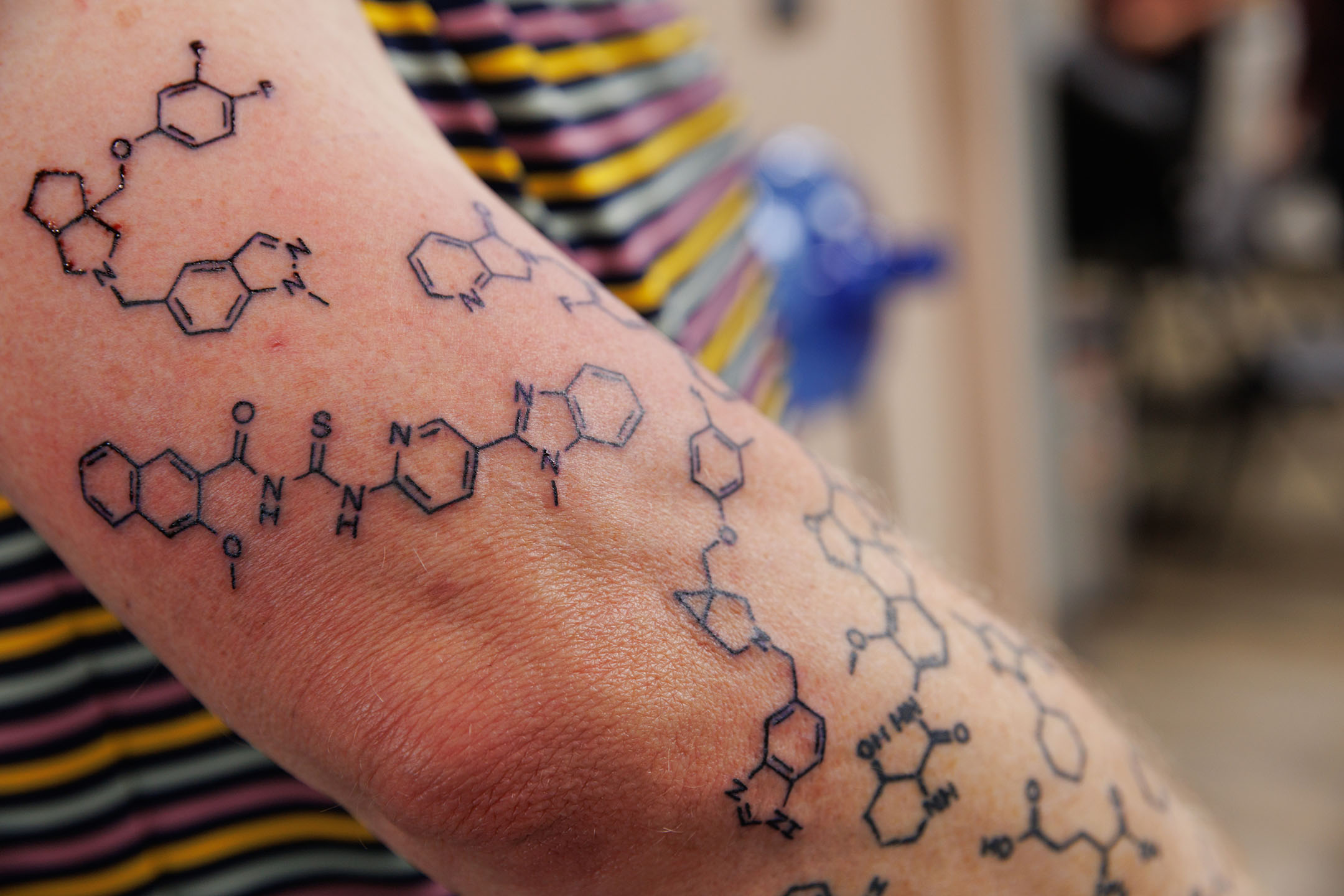
The number of tattoos on Dr. Hopkins’ right arm is a tribute to the impactful compounds he and his team have created together.
Corey Hopkins, PhD, professor of pharmaceutical sciences in the UNMC College of Pharmacy and director of the UNMC Center for Drug Design and Innovation, has found a way to connect with the public, in one-on-one conversations, about science generally and his research specifically.
In fact, people approach him to talk about it. They stop him on the street, in restaurants, wherever he is.
“I’ve had more conversations with strangers in the last couple years than I ever had in the rest of my life,” Dr. Hopkins said.
“It is not uncommon. My daughters will always joke or roll their eyes, because it invariably will happen, regardless of where I am.”
Strangers ask him about chemistry. Compounds. Drug design.
His secret?
It isn’t a secret. It’s right there for everyone to see, up and down his arm.
For UNMC’s Corey Hopkins, PhD, each chemical compound inked on his arm tells its own story. Hear the story of one of his newest tattoos from Dr. Hopkins and graduate research assistant Fahad Imtiaz Rahman.
Dr. Hopkins, a medicinal chemist, designs and creates compounds to try to solve problems. So do his students and mentees who work and have worked with him in his lab. These last few years, he’s taken on a new tradition: having the most significant and impactful compounds they’ve created commemorated permanently upon his body as tattoos.
He started in 2022. But it’s already become such a tradition that around his lab, “We make the joke, if you’re going to get your PhD, you need to have a compound on my arm,” said Dr. Hopkins, who also is interim chair of the UNMC Department of Pharmaceutical Sciences.
One mentee, when making a presentation of her work, instead of using a graphic of the compound she created, simply showed a photo of Dr. Hopkins’ tattoo.
After a recent session with artist Clint Thomsen of Ironwood Ink, he’s up to 29 of them, though he said he remains stringent on the criteria. Chemists create hundreds, or even thousands of compounds. So, he has a rule: The only ones worthy of being immortalized permanently are ones worthy of being immortalized permanently. They must make a significant contribution.
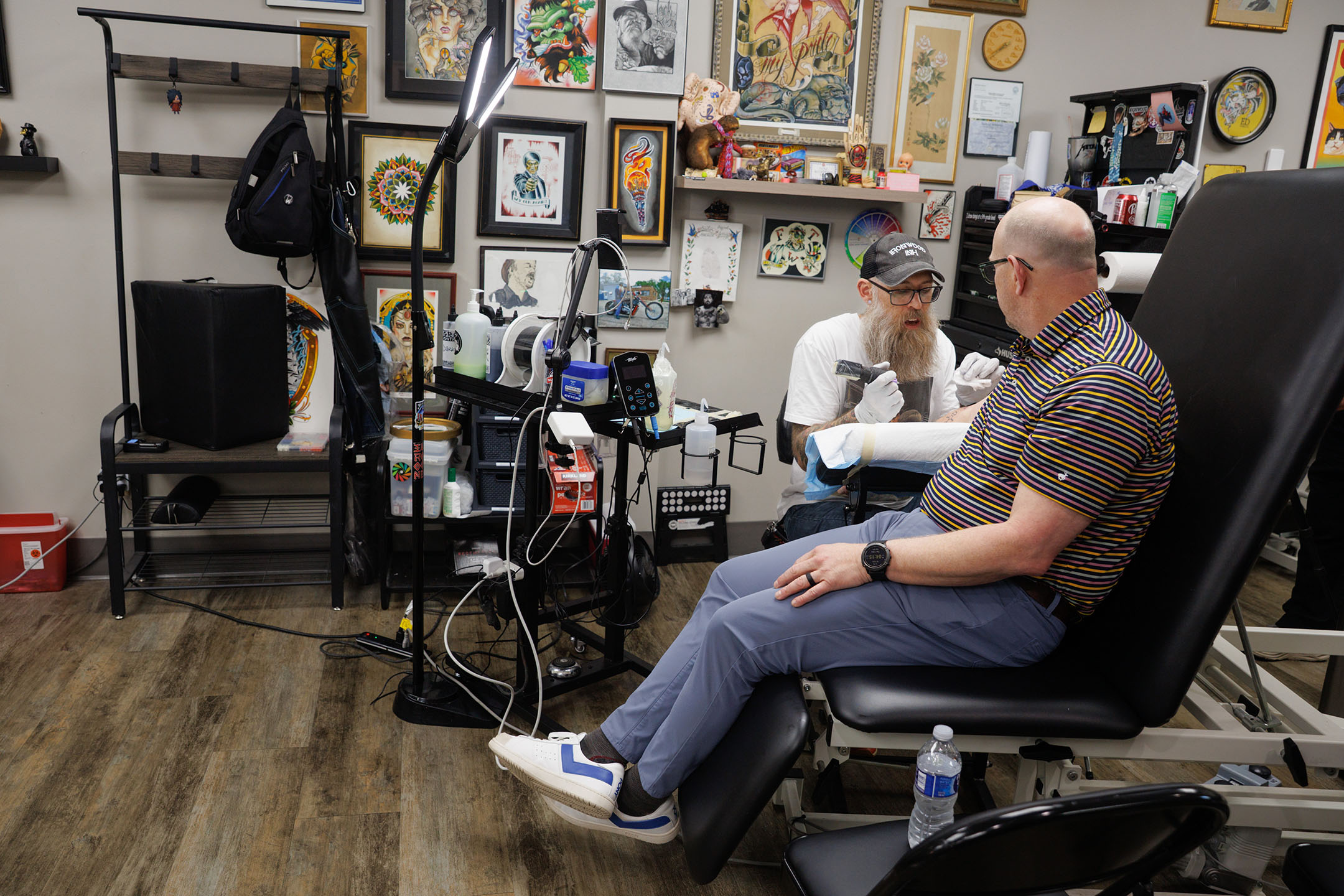
After his recent tattoo parlor session, Dr. Hopkins is up to 29 chemical compound tattoos celebrating the work of his students and lab members.
“The one I just got,” he said, was the result of a large, team-oriented multi-institutional collaborative project, “that went into phase one clinical trials for cognition in Alzheimer's. We just published that in January. So now that the compound has been disclosed, I can get it on my arm.”
“I didn't want to get that beforehand,” he said.
There are embargoes on sharing scientific results in upcoming journal articles until official publication. Dr. Hopkins believes that includes sharing via tattoo, too.
Likewise, “I have several on my arm that we have patents on,” Dr. Hopkins said. And he must make sure all that’s squared away before sharing them “publicly.”
He doesn’t want to get in trouble with UNeMed, he said, joking, not joking.
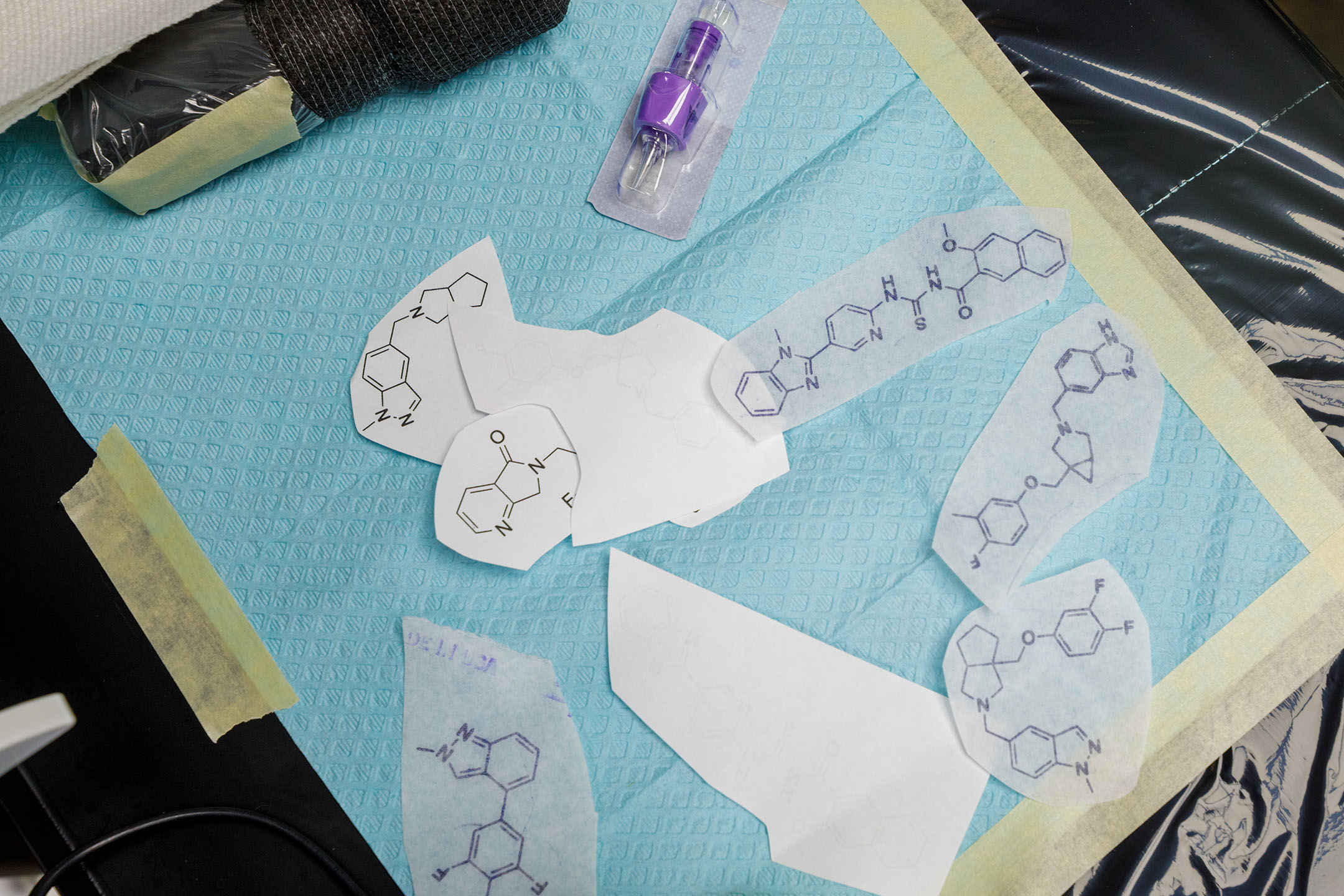
Dr. Hopkins is careful to wait until the articles containing new compounds are published before getting tattoos of them, in order to preserve the journals’ embargos on the scientific materials.
Real estate on his right arm is getting scarce, a testament to the number of impactful compounds he and his team have created. What next? “Because I am a chicken, I have not gone to the inner arm yet,” he said, “I know those really hurt.” Maybe he’ll move to the left arm.
He doesn’t want to have to take off his shirt to show off a student’s triumph.
Conversely, he keeps them where they can be easily covered by long sleeves in professional settings. But these days, tattoos are no longer generally considered as rebellious as they once were. In person, Dr. Hopkins has received nothing but positive feedback, as his daughters can attest.
Besides, a significant accomplishment should be celebrated. You may frame yours on the wall. He inks his (and his students’) wins on his skin.
The point is, doing something that’s a big deal should be noted by doing something that’s a big deal.
“One thing we’ve learned throughout my career, and I tell my students,” Dr. Hopkins said, “your ideas may look great on paper.
“But we just don't understand a lot of biological processes that well, especially, we work a lot in brain diseases, and we don't know. We don't understand the brain hardly at all.
“So, when you can finally find (a solution), it really is a …” And he pauses for a few seconds. The search for words is worth a thousand of them.
“That's why I put it on the arm,” he said. “It's worth permanence in my view. Because it's taken that much time and effort and money. Research money.”
Each one tells a story. A story of science and inspiration and determination and work.
A story he never tires of telling, when strangers stop him on the street.
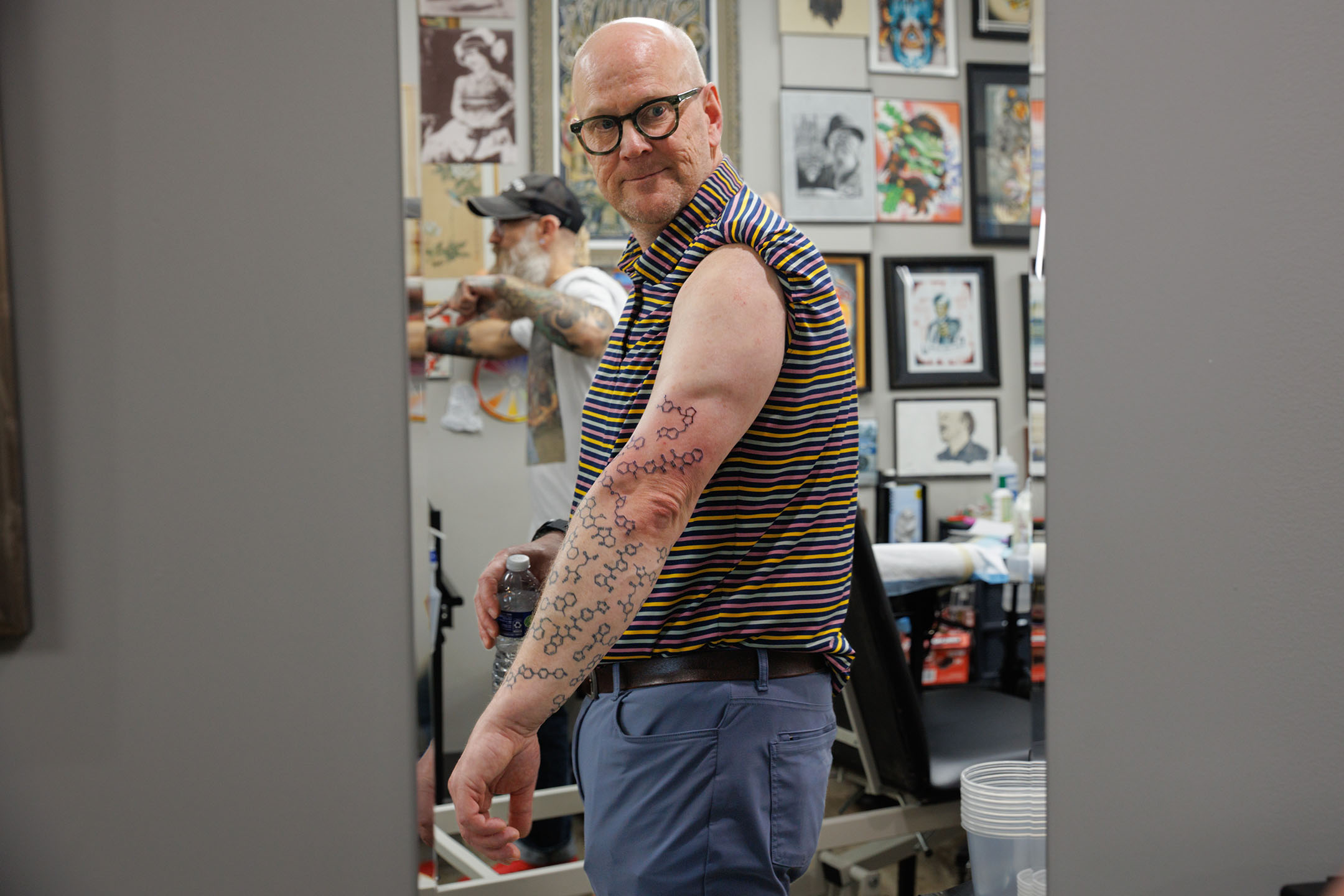
What's next after the right arm is full? Maybe the inner arm, although Dr. Hopkins knows that those tattoos really hurt. Or maybe he’ll move to the left arm.
Chemists: science’s locksmiths
When explaining chemistry, and the making of compounds, Corey Hopkins, PhD, likes to use the metaphor of making a specific key to fit a specific lock. With billions of possible combinations, medicinal chemists must put pieces together to fit just right. Think of all the locks in the world, and making a key that is unique to that lock. When looking at diseases, Dr. Hopkins said, “That biology is the lock, and I'm making a key, and I want to find that perfect fit.” Many of us have had keys we’ve had to jiggle until they work. That’s not good enough, Dr. Hopkins said. “We're looking for that very unique combination of, it's basically carbon, nitrogen, oxygen, fluorine, chlorine and maybe a couple others here and there. But those are the atoms we work with daily.” And what’s the feeling when you find that combination? “Oh, there's nothing better,” Dr. Hopkins said. “I mean ‘cause, you fail so much, right? “You're making 40 to 400 compounds to find that one.”
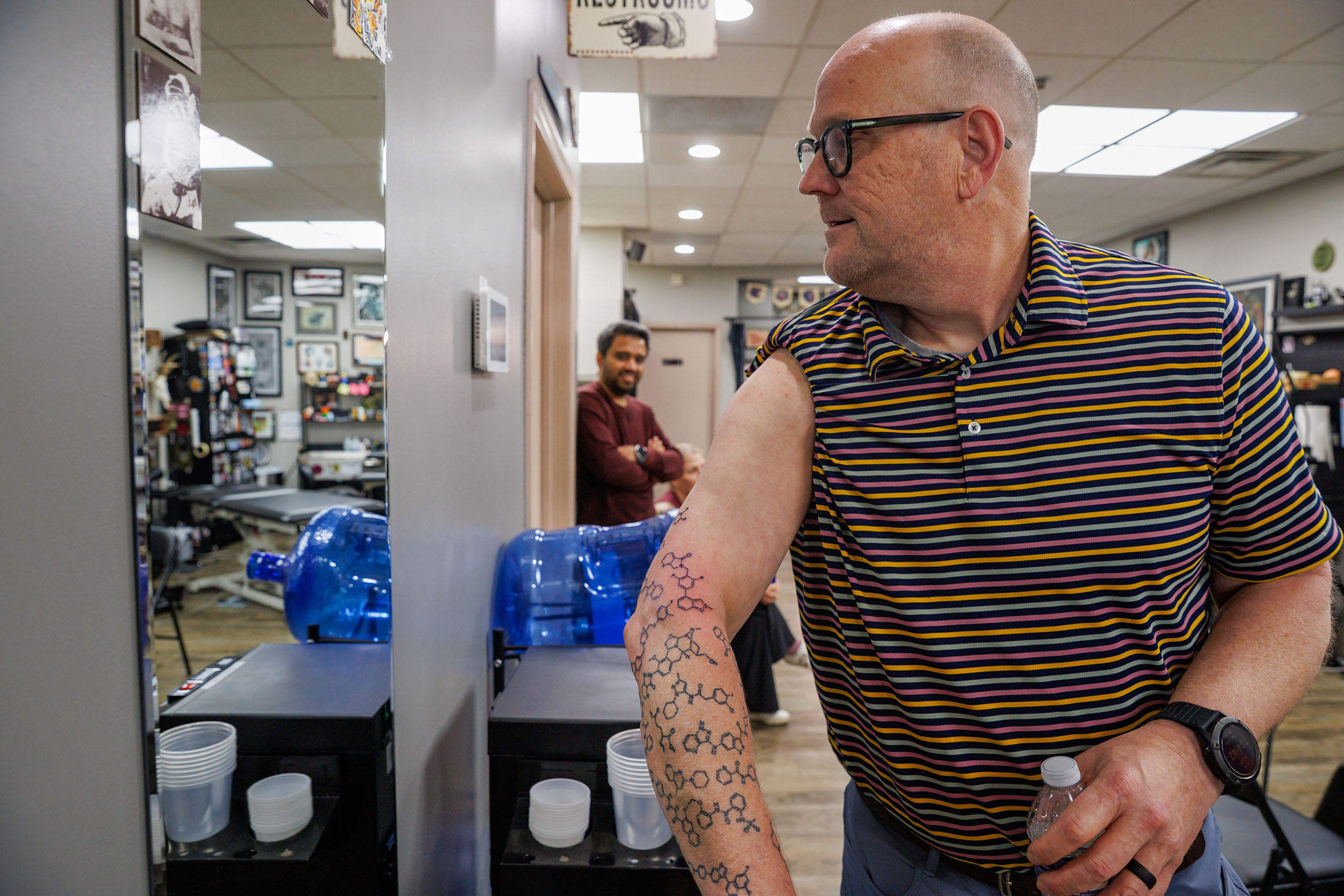
Dr. Hopkins looks at his arm in a mirror while graduate research assistant Fahad Imtiaz Rahman stands back.
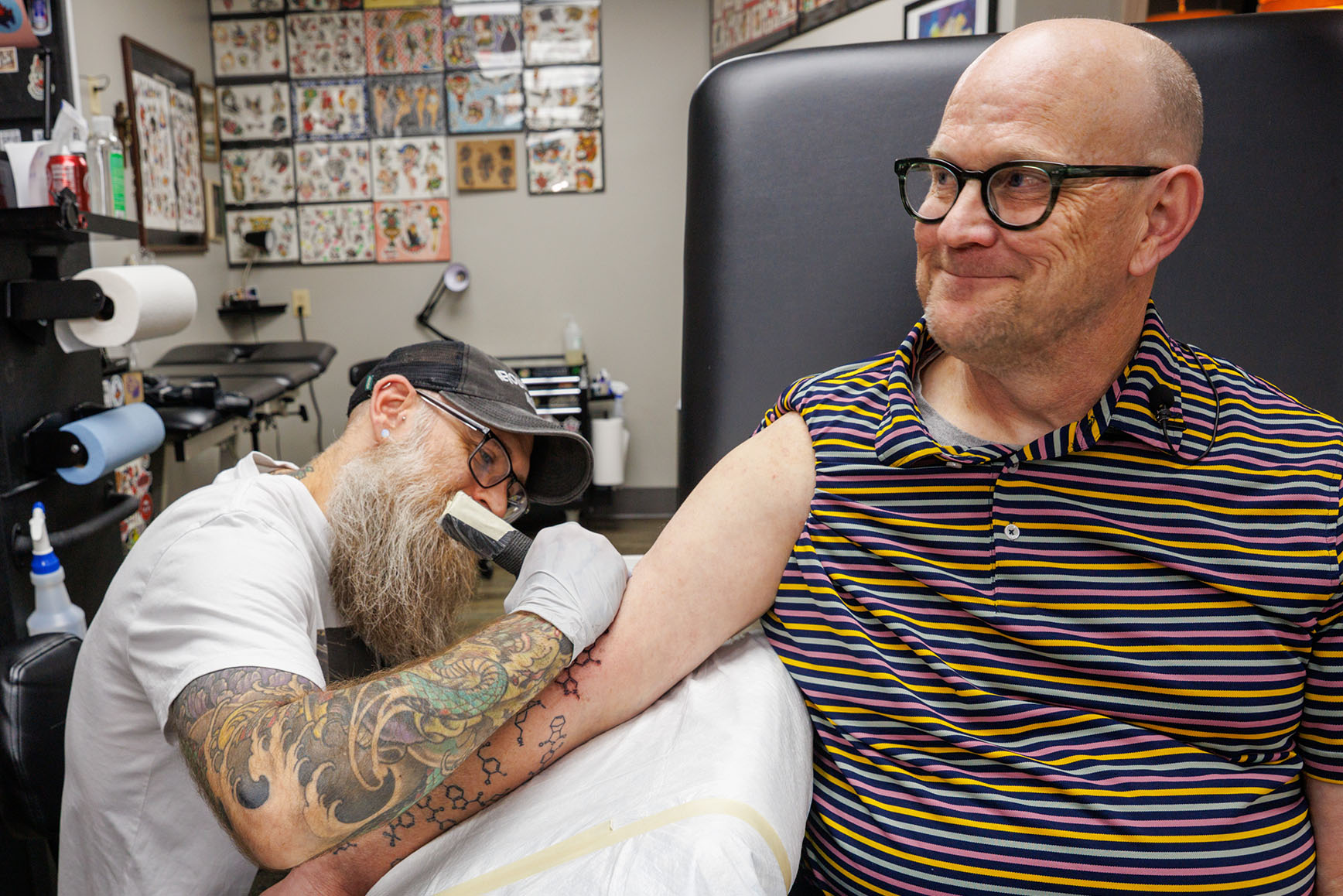
Thank you, Dr. Hopkins for all that you do! This is amazing.
Dr. Hopkins, I hope your students fill up both of your arms!
Great way to bring recognition to your students and the important compounds you are creating to solve medical problems!
This is amazing! What a wonderful way to honor your students and their hard work!